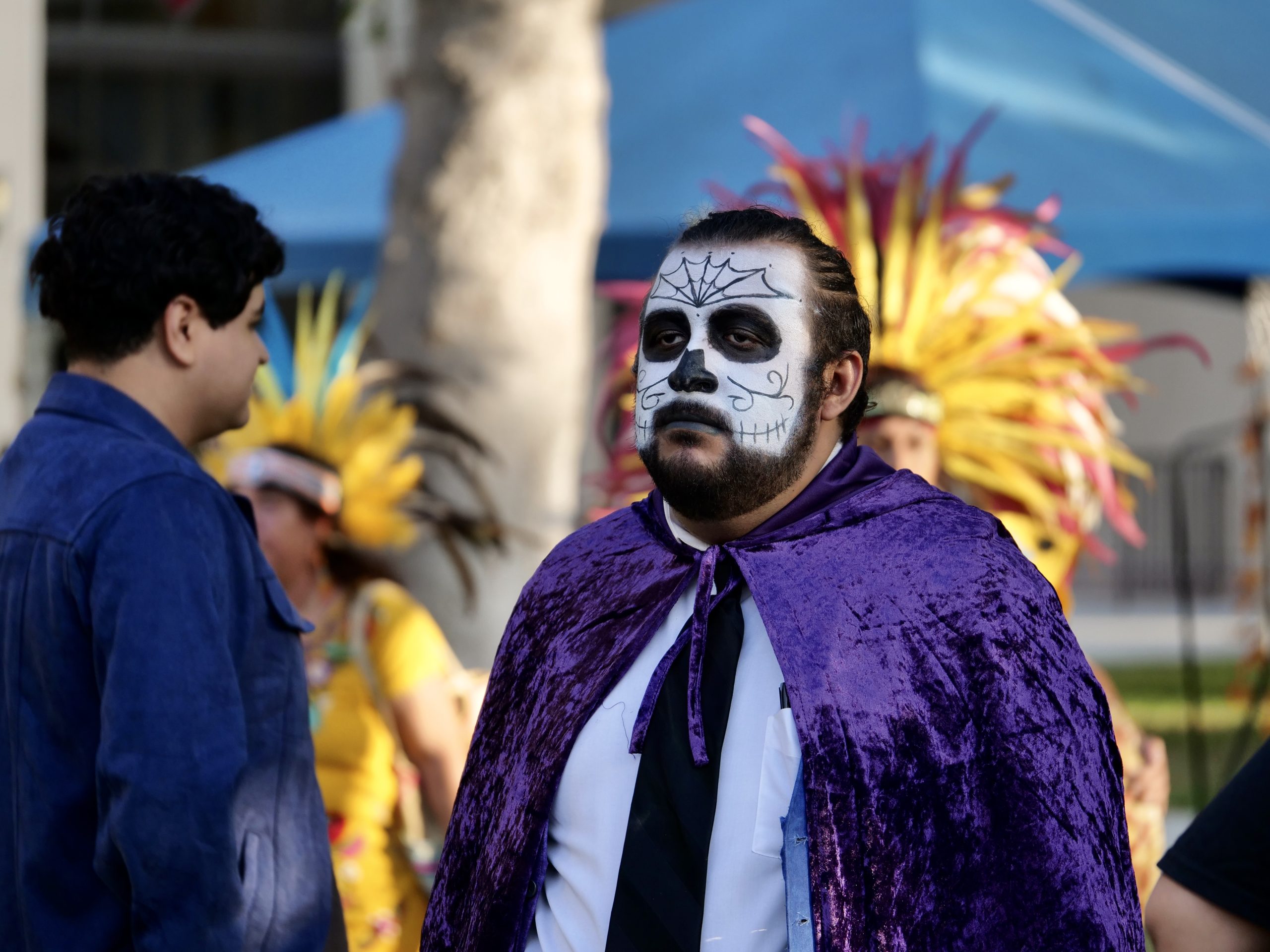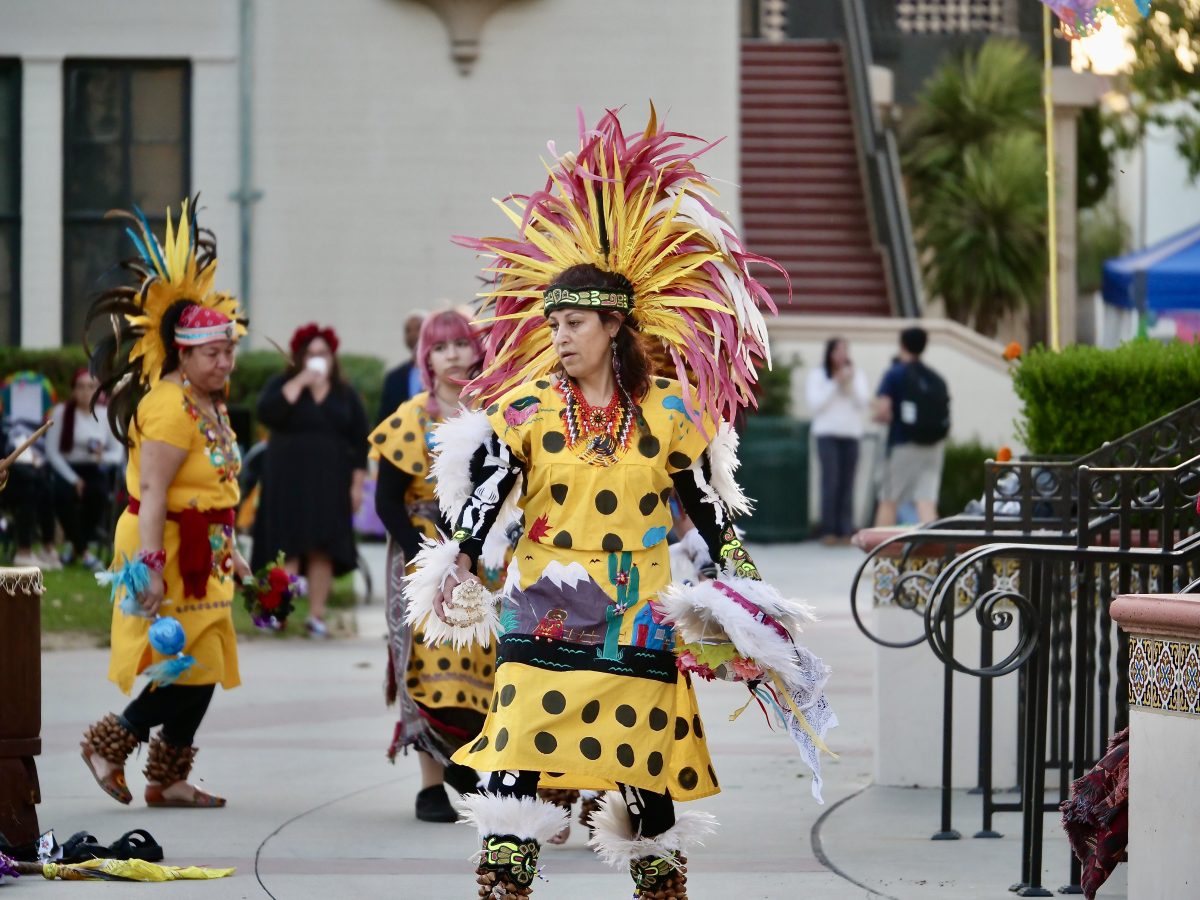“Death is something that is promised to everybody,” said Grads to Be student Isabella Hernandez Reyes. “The end of something doesn’t mean it’s the end of everything. From one ending, we can start 20 more beginnings.”
Dia de los Muertos is a traditional holiday that connects the living and the dead. It is a way to celebrate one’s ancestors and honor the sacredness of life in general. On Thursday, Oct. 26, Fullerton College and its community did just that yet again.
The commemoration was filled with beautifully decorated ofrendas (altars) honoring those who have died. Each ofrenda and its contents were unique in its presentation. From the collection of food, photos, and personal belongings, each ofrenda was made specifically to the loved one that was being honored.
However, the vibrant orange and yellow marigold flowers and calaveras (skulls) are classic staples for an ofrenda. The marigold flowers are meant to guide the spirits to their ofrenda with their pungent smell and vibrant colors.
When visiting, the spirits are believed to feast on their favorite snacks. For this, ofrendas were seen to have snacks such as pan dulce (Mexican pastries), Coca-Cola bottles, Cup of Noodles, Spam and apples, to name a few items.
The calaveras were seen in varied fashions throughout the event. Some attendees wore skull-like face paint with a smile or smirk extending from the corners of their lips. Other calaveras were small sugar skulls meant as offerings to the spirits.
The decorative skulls are a symbol of welcome for incoming spirits. They represent the idea that death is not the final destination, but a chapter in the afterlife. The slight smile on the decorative faces is a way to laugh in the face of death and not be fearful of it.
Attendee Cami Dominguez said Dia de los Muertos can teach us that death is not all negative saying,“[It’s] not a bad thing. It’s not. It doesn’t mean you’re forgotten, it doesn’t mean that you just completely vanish from existence. There’s always going to be someone who remembers you.”
To start off the event, Mazatl and Aztec dancers stepped, hopped and spun to the fast-paced drums and shaking of maracas. Many of the dancers wore black polka-dotted yellow or orange dresses with a multi-colored headdress and maracas wrapped around their ankles. The headdresses sprouted from their heads like a fully bloomed flower full of multi-colored feathers.
“The importance of dancing during Día de los Muertos is to pay homage to our ancestors. We dance to bring their spirits back to honor their lives. Dancing is the happiness and the gifts that we share and celebrate those who have passed on,” said Jenny Robles and Malena Vega in a Santa Cruz Museum of Art and History article.
As the night went on, more and more people filled the Fullerton College quad. The wavering candle lights lit up the space as the sun went down.
There was a grandmother holding her granddaughter’s hand as she leaned over and showed a picture of her departed family member to the child. Dia de los Muertos gives people a moment in time to slow down and appreciate the lives of their passed loved ones.
Attendee Briana Esparza said she was remembering her uncle who passed a little over a year ago. “I don’t want anybody to forget who he was. I don’t want anyone to forget him. How he looked, how his vibe was.”
The Day of the Dead is a special holiday in Mexican culture traditionally celebrated on Nov. 2 each year. It is a day where families welcome back the souls of their fallen loved ones and rejoice together.
For Alexander Torres, Dia de los Muertos is an opportunity to not only celebrate the dead, but to also recognize the significance and beauty of Mexican culture.
“For me, it means being able to share my own personal culture,” said Torres. “Someone I do have in mind is my grandmother… Her passing was very tough to say the least. However, today we’re able to look at a brighter future because of what she was able to do within the family.”



